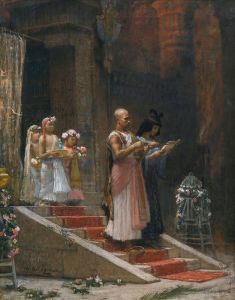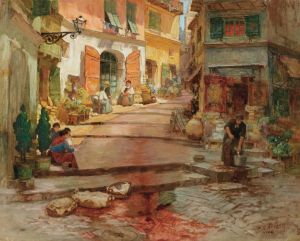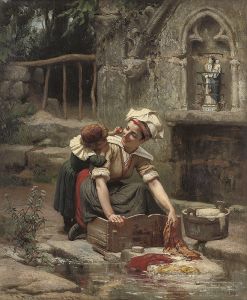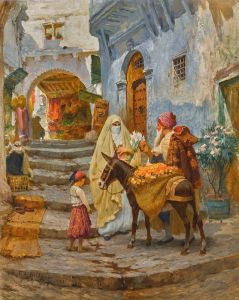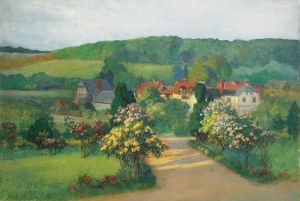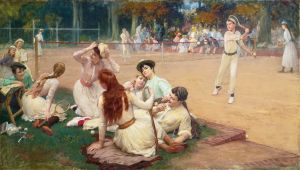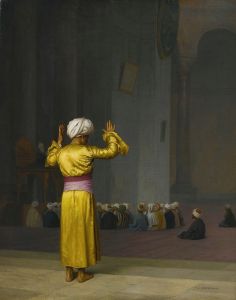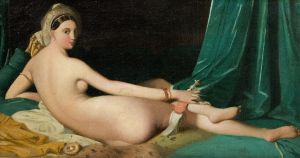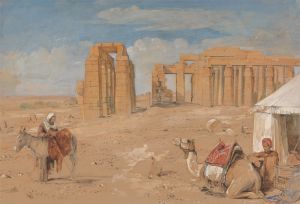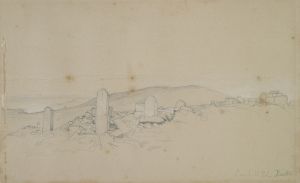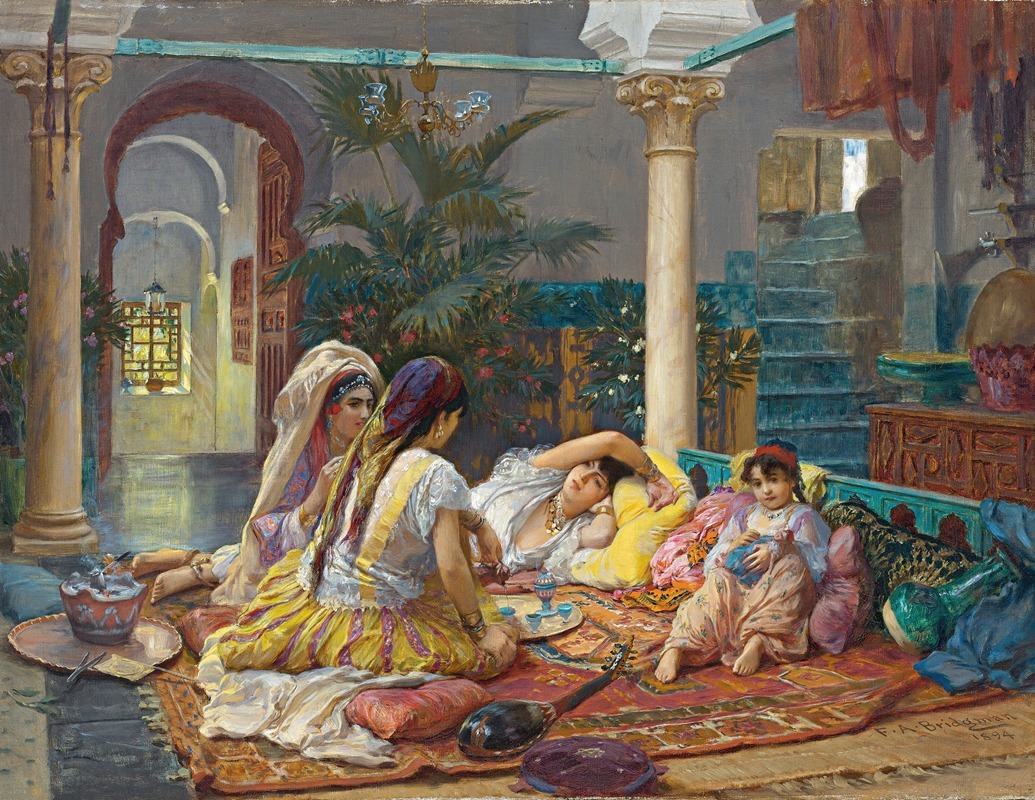
In The Harem
A hand-painted replica of Frederick Arthur Bridgman’s masterpiece In The Harem, meticulously crafted by professional artists to capture the true essence of the original. Each piece is created with museum-quality canvas and rare mineral pigments, carefully painted by experienced artists with delicate brushstrokes and rich, layered colors to perfectly recreate the texture of the original artwork. Unlike machine-printed reproductions, this hand-painted version brings the painting to life, infused with the artist’s emotions and skill in every stroke. Whether for personal collection or home decoration, it instantly elevates the artistic atmosphere of any space.
"In the Harem" is a painting by the American artist Frederick Arthur Bridgman, who was known for his Orientalist works. Bridgman was born in Tuskegee, Alabama, in 1847 and later moved to France, where he studied under the renowned academic painter Jean-Léon Gérôme. Bridgman became one of the most prominent American artists associated with the Orientalist movement, which sought to depict the cultures and settings of the Middle East and North Africa through a Western lens.
Created in the late 19th century, "In the Harem" exemplifies Bridgman's fascination with the exotic and opulent interiors that were often romanticized in Orientalist art. The painting portrays a serene and intimate scene within a harem, a private space traditionally reserved for women in some Middle Eastern households. Bridgman's attention to detail is evident in the intricate patterns and textures of the fabrics, the luxurious furnishings, and the overall composition, which invites viewers into a world that was largely inaccessible to Western audiences at the time.
Bridgman's work is characterized by its meticulous detail and vibrant use of color, both of which are evident in "In the Harem." The painting captures the play of light and shadow, enhancing the sense of depth and realism. Bridgman's ability to render such detailed and atmospheric scenes was likely influenced by his travels to Egypt and Algeria, where he gathered inspiration and sketches that informed many of his later works.
The Orientalist movement, of which Bridgman was a part, has been the subject of much critical analysis and debate. While these works were popular in their time for their exotic appeal and technical skill, modern critics often discuss them in the context of colonialism and the Western gaze. Orientalist paintings like "In the Harem" are now examined for how they reflect and perpetuate stereotypes and fantasies about Eastern cultures, rather than providing an accurate or respectful representation.
Despite these critiques, Bridgman's technical prowess and his ability to capture the imagination of his audience have ensured his place in art history. His works, including "In the Harem," continue to be studied for their artistic merit and as cultural artifacts that offer insight into the Western perceptions of the East during the 19th century.
"In the Harem" is housed in a private collection, and like many of Bridgman's works, it occasionally appears in exhibitions that explore Orientalism and 19th-century art. Bridgman's legacy as an artist is marked by his contribution to the Orientalist genre and his role in bringing the allure of the East to Western art audiences.






